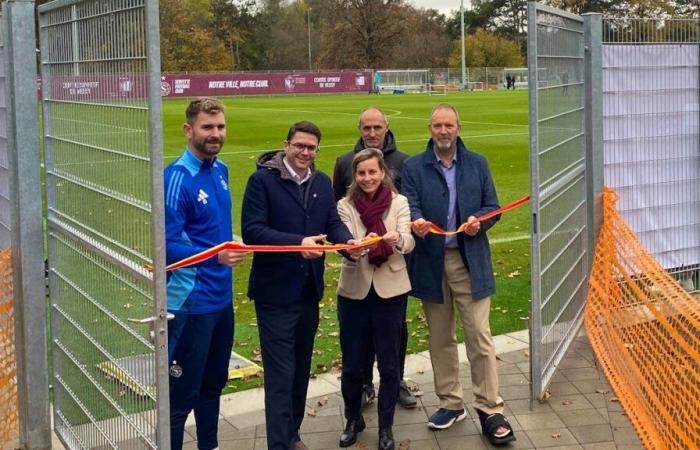“Finally! We have a magnificent football team in Geneva, which has been waiting for a beautiful training ground for too long.” The city’s administrative councilor Marie Barbey-Chpuis was delighted, this Tuesday, to officially inaugurate the new workplace for Servette FC players, at the Vessy sports center, which they have actually been using for a month. “It is a solid base where the team can train in the best conditions. The first feedback from players and staff is very positive,” greeted Hervé Broch, president of the garnet club.
The pitch, made of natural grass reinforced with synthetic fibers (read the box), measures 105m x 68m. It was born from a collaboration between the club, the City (owner of the premises) and the Canton. The latter financed the work to the tune of 8 million. Why such a price? Because the project does not stop at professionals, but also benefits amateurs and juniors who use the sports center (around fifty teams): two new synthetic fields were opened in June and are intended for them. Marie Barbey-Chpuis welcomes this diversity, where pros and ordinary footballers are called upon to cross paths: “Young people need accessible models, and the club draws its strength from its popular base.”
Servette FC will have this training ground for ten years, before returning it to the City. This solution is in fact temporary: ultimately, the Canton wants to permanently establish the professional teams, men’s and women’s, at Bécassière, in Versoix; and the Academy, that is to say the fifteen elite junior teams, at La Crotte-au-Loup, in Vernier. “These projects are progressing”, but “at a pace of regional development”, indicated Thierry Apothéloz, State Councilor responsible, in particular, for Sport.
Determined to create cantonal sports infrastructures (“the influence of Geneva is at stake”), the elected official repeated his desire to establish, in the meantime, the Servette FC Academy in Les Evaux. The project is currently blocked by appeals. “We are waiting for a rapid response from administrative justice”, in the absence of a political solution. The thing is urgent, he explains, because if young people still use Balexert, “the academic pressure is significant”: there are plans to build a new orientation cycle there, a necessity, given the number of students sharply increasing.
“Like reinforced concrete”
The training ground offered to Servette FC is based on a sand substrate, which guarantees its permeability. Rolls of natural grass are laid on top. In short, time grows in the sand. This being unstable, it is reinforced with synthetic strands, stitched onto the surface. “The rollers are nailed with fibers,” illustrates Maher Hachen, engineer at Infrasport, who gives another image: “it’s the same principle as reinforced concrete.” In total, natural grass constitutes 95% of the playing surface, synthetic 5%. “The terrain thus has a much greater traction force” than 100% natural terrain, indicates Fabrice Devantey, director at Terrasport. The only constraint is that since the substrate “has very low microbial life”, the grass cannot live there for a long time. “Once a year, we have to scalp and resow.” The lifespan of the fiber is around twenty years.






